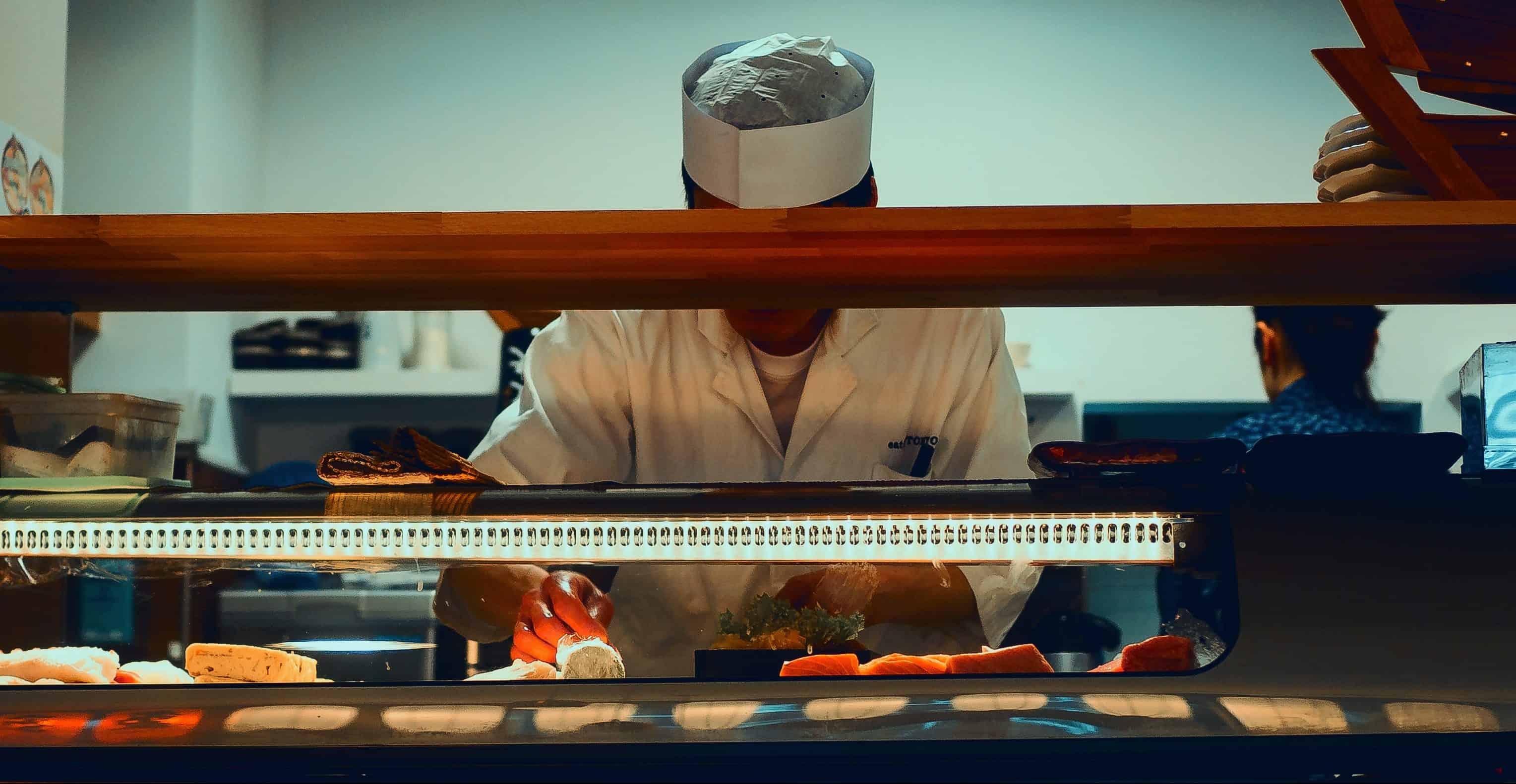When it comes to Japanese food, sushi is often one of the first things that comes to mind. Thanks to globalization, that delectable combination of raw fish and vinegary rice has become more popular than ever. But while you can now order it all over the world, sushi in Japan is a culinary art — and comes with a few guidelines.
Taking advantage of the opportunity to eat sushi in Japan is an absolute must. And while no one will escort you out of a sushi bar for using chopsticks at the wrong time, brushing up on sushi etiquette before dining will help foodies get the most out of the experience. To fully prepare for your next trip to Japan, check out these useful tips.
What to expect
It helps to know the differences between the various ways that sushi may be presented. The most popular is nigiri, which is a hand-pressed topping, or neta, on top of rice. Makirefers to the cylindrical rolls that travelers might find most familiar. (Sashimi, while not sushi, is often found on the menu and refers to sliced raw fish.)
When at a sushi bar, the chef will often take the lead, creating and serving individual pieces over the counter. Many customers choose to order omakase, a Japanese phrase that means “I’ll leave it to you,” allowing the chef to create a set of courses as they see fit. (If you are seated at a sushi bar, it’s better not to overly engaged the chef in small talk, which diverts them from their work.) Typically, the chef begins by serving lighter fare, like white or silver-skinned fish, before moving on to stronger options, like salmon or tuna, because the fatty flavors make it more difficult to savor the subtler fishes. Fatty maki rolls are usually served at the end of the meal to ensure everyone is full. Typically, an omakase meal can be pricy, but also well worth the splurge, as it highlights the chef’s preferred ingredients and personal culinary flair.

Understanding the process
At the start of a meal, patrons are usually given a wet towel (oshibori) to clean their hands. Fold it neatly once you use it and set it aside, as this often serves as your napkin throughout the meal. (Also good to know: It’s not intended to use on your face to freshen up!) Though sashimi is generally eaten with chopsticks, for most of the courses, it’s totally up to the individual to decide how they want to eat. The most important thing is that the piece stays intact, which is more difficult with chopsticks, so regulars often choose to eat rice-based pieces with their fingers.
For that reason, sushi is meant to be eaten in a single bite, fish side down on the tongue to better appreciate the complex flavors and fresh texture. Eating a piece in multiple bites will cause it to fall apart. As soon as the chef presents a piece, pop it in your mouth because the rice will quickly begin to dry out and the fish can start to oxidize. Maintaining peak freshness is why sushi comes out one piece at a time.
Enjoying the extras
Anyone who is familiar with sushi probably knows that it’s usually accompanied by soy sauce (shoyu), pickled ginger (gari) and a super spicy, green horseradish-like paste known as wasabi. When enjoying sushi in Japan, these toppings have very specific uses and customs.
While soy sauce goes in the bowl provided, be careful not to pour too much, as wasting it is a Japanese faux pas. Diners shouldn’t need too much anyway, because dousing the piece in soy sauce suggests to the chef that the fish is not fresh and needs to be disguised with another flavor. Finally, when eating nigiri, dip the piece fish side down, as the rice will soak up too much liquid, changing the flavor of the piece and causing it to falling apart.
Similarly, sushi will often come out with wasabi already added by the chef based on the flavors in that particular piece, so diners should be wary of adding more. Mixing wasabi into the bowl of shoyu is only the norm when eating sashimi, and gari should only be used as a palate cleanser, not a topping.
While it may seem like there are a lot of sushi-eating rules, the above are mostly just guidelines that will enhance the sushi bar experience. By taking the time to brush up on the details before making a reservation, the average traveler can understand some of the subtleties around the enjoyment of sushi and dive into an authentic Japanese dining opportunity.

